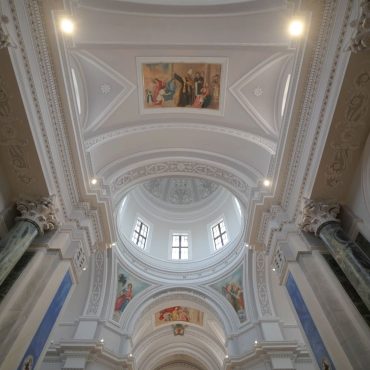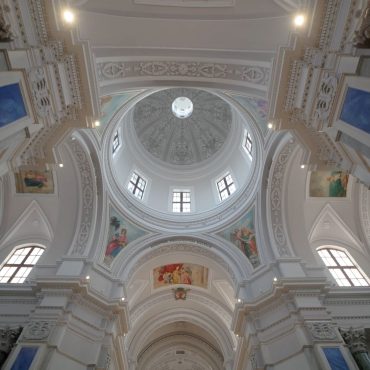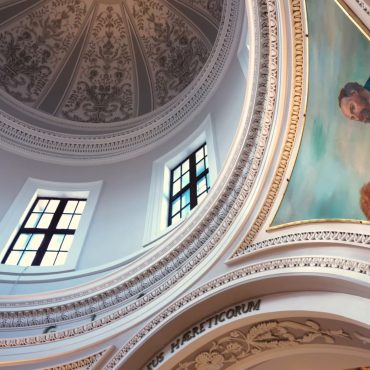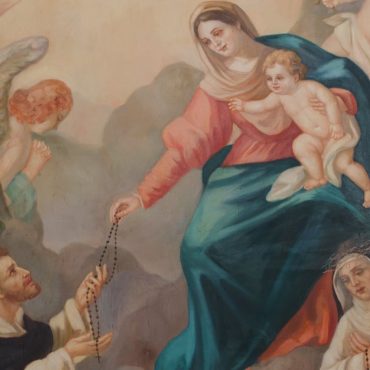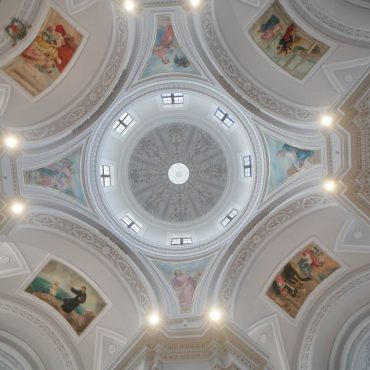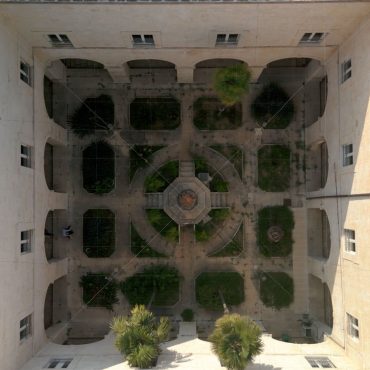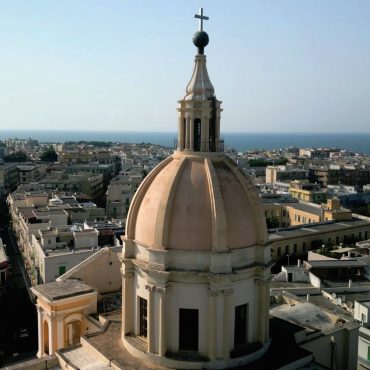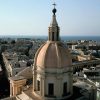
Chiesa Sant'Agostino and Cittadella della Cultura
(18th century – 19th century)
The large dome of Sant’Agostino rises majestically in the peaceful Giovinazzo sky, welcoming visitors with its imposing presence. The fifty-metre tall dome tells a story of faith and perseverance. In 1582 after long pilgrimages, the Augustinians found a place in which to settle, on the ruins of a small church dedicated to St. Thomas on the Via di Santa Lucia. They began to build a new church led by the architect Barbiero Barba and the engineer Giovanni Mastropasqua of Giovinazzo. Work began in 1734 and was completed nearly a century later by Giovanni’s son, Giuseppe Mastropasqua who created the magnificent dome.
The church of Sant’Agostino is built in a neoclassical style with a façade divided in two orders by the Habsburg coat of arms. Inside the Greek cross plan is dominated by the dome and its lantern which casts light on the presbytery and its 18th century wooden choir stalls. The side chapels and the pendentives of the dome are decorated with paintings by local artists De Musso and Giuseppina Pansini. The statue of the Madonna del Rosario, for many years a source of devotion for the locals, was later moved to the Chiesa dello Spirito Santo. Today the statue of the Sacred Heart is revered and carried in a procession every year during a popular festival, second only to the festival of the patron saint.
Next to the church, the ancient monastery is now a cultural centre and houses the “Filippo Roscini” library, a conference room, workshops and study space. After the Augustinians left, the building was turned into a school and there are still classrooms on the first floor. The history of this church in Giovinazzo tells a tale of faith, art and community. The large dome represents the resilience and unbreakable spirit of the townspeople, capable of turning challenges into opportunities, and ruins into timeless works of art.

